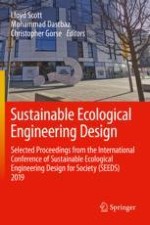2020 | OriginalPaper | Buchkapitel
Performance Evaluation of Five Sediment Barriers Using a Full-Scale Testing Apparatus
verfasst von : Alan Bugg, Wesley Donald, Wesley Zech
Erschienen in: Sustainable Ecological Engineering Design
Aktivieren Sie unsere intelligente Suche, um passende Fachinhalte oder Patente zu finden.
Wählen Sie Textabschnitte aus um mit Künstlicher Intelligenz passenden Patente zu finden. powered by
Markieren Sie Textabschnitte, um KI-gestützt weitere passende Inhalte zu finden. powered by
